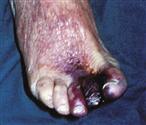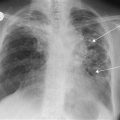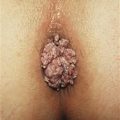Foot Pain
Pain in the foot is a common presenting complaint. The majority of causes are related to either postural problems or arthritis.
History
Traumatic
History of trauma, e.g. heavy object falling on foot, crush injuries. Fatigue or march fractures may occur with prolonged walking, e.g. as in soldiers marching or in hikers. Severe pain may result. It usually affects the second or third metatarsal bones. Track and field athletes are particularly susceptible to stress fractures.
Infective
Cellulitis may occur following a puncture wound, e.g. standing on a nail, insect bite. The history will usually be apparent. The patient will present with a painful, red, swollen foot. Osteomyelitis is rare but may follow blood-borne infection, e.g. with salmonella, or local infection, especially in diabetics. There will be pain, tenderness, swelling and redness over the affected bone. Pyogenic arthritis is rare but presents with a painful, red, swollen joint.
Inflammatory
The foot is commonly involved in rheumatoid arthritis. Deformities are multiple and eventually severe. There are usually signs of rheumatoid arthritis elsewhere. Plantar fasciitis causes pain under the heel. The patient is often middle aged. It may also be associated with Reiter’s disease. The pain is often worse on standing after a period of rest. Osteochondritis may affect the second metatarsal head (Freiberg’s disease) or the navicular bone (Köhler’s disease). Pain, tenderness and swelling occur in relation to the particular bone.
Vascular
There may be a history of intermittent claudication progressing to ischaemic rest pain. The patient complains of severe pain in the foot, usually in bed at night, which is relieved by hanging the foot out of bed. The patient may also complain of ulcers and discoloration of the foot. Gangrene may be apparent. Check for a history of smoking, diabetes.
Metabolic
Gout classically affects the first MTP joint but other joints of the foot may be affected. There is acute onset of pain, redness and swelling. There may be a previous history. Attacks may be precipitated by trauma, surgery, infection or drugs, e.g. diuretics. There may also be a history of leukaemia, polycythaemia and cytotoxic or immunosuppressive therapy.
Degenerative
Osteoarthritis, flatfoot or other foot deformities (p. 160) may cause foot pain. Hallux rigidus, i.e. primary osteoarthritis of the MTP joint of the great toe, causes pain and stiffness.
Other
Metatarsalgia causes pain under the metatarsal heads. It is most common in middle-aged women. Excessive standing triggers the symptoms. Morton’s metatarsalgia is caused by a digital neuroma. It most often affects the nerve running between the third and fourth metatarsal heads. It is commonest in women aged 40–50 years. Sharp intermittent pains shoot into the toes, usually occurring only when shoes are worn. Plantar warts are painful. The patient will usually have noticed the wart. They are common in the region of the metatarsal head, great toe and heel. Corns and callosities over pressure points may be painful. They are often associated with deformities of the foot. Referred pain to the foot may occur due to spinal lesions. A history of backache or weakness in the limb may be relevant.
Examination
Traumatic
Pain, tenderness, swelling, deformity or crepitus will be present with fractures. With march fractures, there may be localised tenderness and oedema on the dorsum of the foot.
Infective
Cellulitis, osteomyelitis and pyogenic arthritis will be associated with fever, malaise and swelling, redness and tenderness of the foot.
Inflammatory
Rheumatoid arthritis may be associated with signs elsewhere, e.g. hands. In the foot, there may be pes planus, hallux valgus, clawing of the toes and subluxation at the MTP joints. With plantar fasciitis, there is usually localised tenderness over the undersurface of the os calcis. With Reiter’s disease, there may be urethritis and conjunctivitis. Freiberg’s disease and Köhler’s disease present with swelling and tenderness over the relevant bone.
Vascular
Look for signs of ischaemia, e.g. pallor, paraesthesia, loss of pulses, ulcers, gangrene.
Metabolic
With gout, there will be swelling, redness and tenderness of the first MTP joint. Gouty tophi may be present elsewhere.
Degenerative
Osteoarthritis presents with pain and stiffness, e.g. hallux rigidus. Flatfoot and other deformities may be apparent (p. 160).
Other
In metatarsalgia, there is tenderness under the metatarsal heads. Callosities may be present under the metatarsal heads. In Morton’s metatarsalgia, squeezing the forefoot may produce the symptoms. Plantar warts (verruca plantaris) are usually obvious. They present as flat, hyperkeratotic lesions, which seem to have been pushed into the skin of the sole of the foot. In contrast to callosities, pressure over them causes pain. If referred pain is suspected, a full neurological examination should be carried out.
General Investigations
■ FBC, ESR
Hb ↓ anaemia of chronic disease, e.g. rheumatoid arthritis. WCC ↑ infection, e.g. cellulitis, osteomyelitis. ESR ↑ rheumatoid arthritis.
■ Foot X-ray
Fractures (march fractures may not be apparent until callus forms, therefore the need for repeat X-rays). Osteomyelitis – normal in early stages, osteoporosis, subperiosteal new bone, sequestration. Rheumatoid arthritis. Osteoarthritis. Osteochondritis – dense fragments of bone. Foot deformities.





